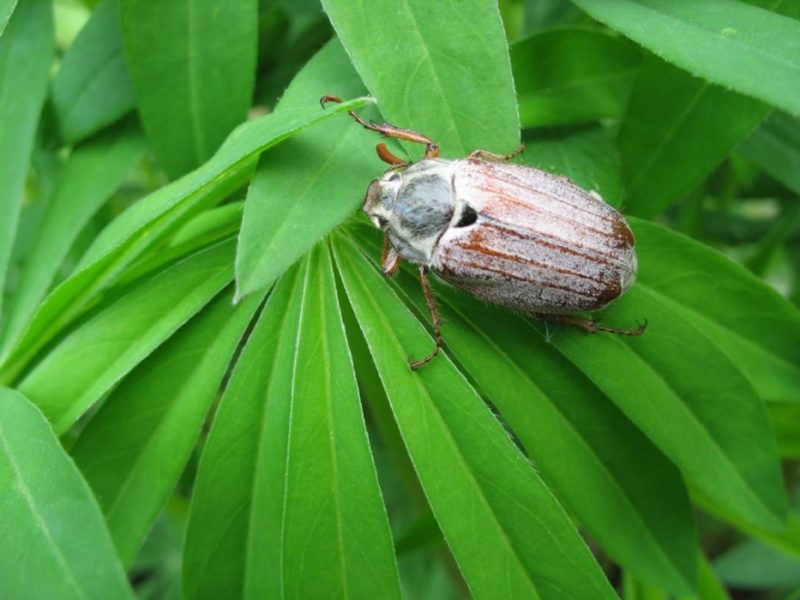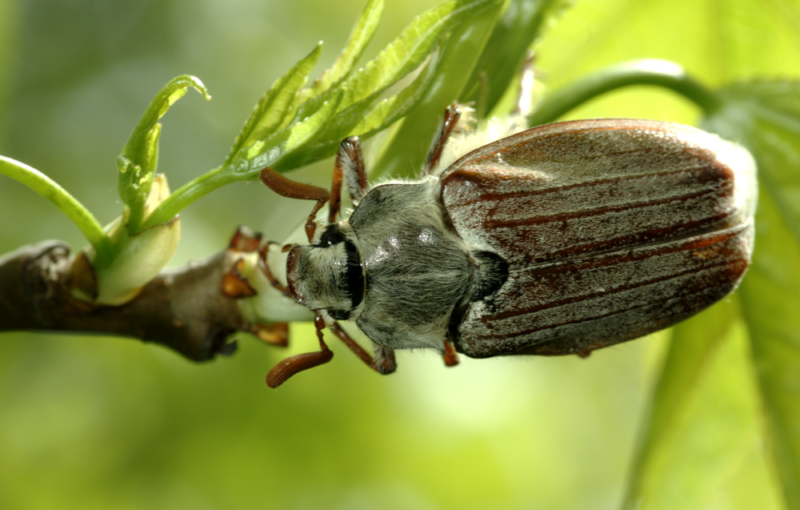May beetles, also called Khrushchev, are associated with heat in spring by many. These insects are especially popular with children who try to tame and turn them into pets. Can this really be done, and what may beetles eat as food in natural and domestic conditions, you will learn further.
Material Content:
Lifestyle & Area
Khrushchev is a typical representative of the genus Melolont, living in Asia and the northern part of Europe. The life cycle of this arthropod is on average 3 years, during which it undergoes a series of transformations.
- In the first year of life, a larva hatches from an egg laid by an adult female. It originates in the upper layers of the soil and develops throughout the entire warm season. To winter, the caterpillar formed over the summer burrows deeper into the soil and waits for the cold. The larva of the May bug in the first year of existence feeds on the small roots of grasses or cultivated plants.
- The second year of the development of cartilage also proceeds underground. But the individual is already reaching more impressive sizes (up to 5 centimeters) and has a good appetite. In the second year of life, she is already able to eat around the root system of an adult tree, thereby causing significant damage to plants.
- In the third year, a large caterpillar turns into a bug, passing into the final stage of its life cycle - an adult. The adult insect is still underground for some time, and is selected to the surface only for mating. In dry and warm weather, May beetles fly around trees and over meadows, looking for a mate. The male dies soon after the mating season, and the female - after laying eggs in the ground.
The beetle in the adult stage in natural conditions eats succulent leaves, shoots, buds of trees and shrubs growing in temperate climatic zones. The arthropod diet also includes cultivated plant varieties, for example, apple trees, grapes, pears or plums.
Due to the damage that pests cause to agriculture, May beetles and their larvae are actively exterminated, artificially reducing the population.
What may bugs eat in nature
The diet of May beetles in the natural habitat is quite diverse. It depends on which trees or shrubs grow nearby.
Insect larvae significantly harm the root system of the tree, and also eat any root vegetables: carrots, beets and potatoes. Adults in the developmental stage of adults destroy shoots, buds and young leaves.
This leads to the fact that the plant loses its ability to photosynthesis and is sick for a long time due to the damage received.
The following varieties of trees are suitable for eating khrushchev:
- Garden crops: apple tree, pear, plum, quince, cherry.
- Deciduous trees: linden, alder birch, maple, aspen, willow, poplar.
- Softwoods: pine, spruce.
Not only on trees, but also near bushes, flocks of May beetles can be found. Rosehips, currants, gooseberries are excellent food for these insects.
The diet of insects at home
In the natural habitat, such insects are not whimsical in the choice of food and can cause significant harm to plants. At home, an adult individual most often turns out to have turned from a larva into a bug. It is of interest to children and naturalists - amateurs who are trying to make such a buzzing specimen as a pet.
In captivity, horsetail eats the following goodies:
- Vegetables: potatoes, carrots, cucumber.
- Young shoots and fresh leaves of trees.
As practice shows, dry and sluggish goodies are not very attracted by the insect. Only juicy shoots and leaves are suitable for food for May beetles.
It should be borne in mind that such individuals in the adult stage are not the most suitable option for a pet. Both in the natural environment and in captivity, it does not exist for long. After the insect mates and lays eggs in the ground, it dies. Being a larva or a chrysalis, the bug can live in captivity for quite some time, but only if all conditions are created for this.
What bugs drink in nature and in captivity
In the natural habitat of the horsetail, a large amount of moisture surrounds. He drinks dew from grass or trees, and also finds moisture after rain in twisted leaves. Since May beetles feed exclusively on young and juicy leaves, they get the bulk of the water from food, and in case of lack of moisture, fill the deficit with dew drops. In the state of the larva, the insect receives fluid from succulent root crops, and during the drought period it digs deeper into the ground.
At home, before you feed the insect with young shoots, they need to be slightly irrigated. So the crush can independently replenish the moisture supply in case of dehydration. Putting water separately for him is considered impractical, since the bug needs its minimum amount, and in a deep container it can drown.
When settling an insect at home, it is worth remembering about the danger it poses to agricultural land. An adult larva can kill a shrub or a young tree.
















